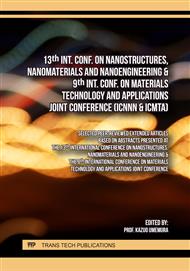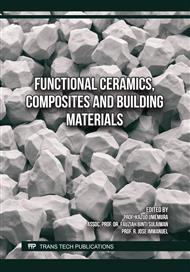[1]
S.A. Shipilov and I. Le May, "Structural integrity of aging buried pipelines having cathodic protection," Eng. Fail. Anal., vol. 13, no. 7, p.1159–1176, 2006.
DOI: 10.1016/j.engfailanal.2005.07.008
Google Scholar
[2]
M.D.A. Shahid, M.H.M. Hashim, W.A.W. Mustafa, N.M. Fadzil, and M.F. Muda, "Finite Element Analysis (FEA) of Fiber-Reinforced Polymer (FRP) Repair Performance for Subsea Oil and Gas Pipelines: The Recent Brief Review (2018-2022)," J. Adv. Res. Appl. Sci. Eng. Technol., vol. 32, no. 3, p.366–379, 2023.
DOI: 10.37934/araset.32.3.366379
Google Scholar
[3]
O.O. Odeyemi and P.A. Alaba, "Microbiologically Influenced Corrosion in Oil Fields: Mechanisms, Detection, and Mitigation Strategies," D. J. Ou, Ed. Rijeka: IntechOpen, 2024, p. Ch. 6.
DOI: 10.5772/intechopen.1005181
Google Scholar
[4]
M.F. Muda et al., "Behaviour of Layered Composite Fiber-Reinforced Polymers for Rehabilitation Subsea Pipes BT - Proceedings of 6th International Conference on Civil Engineering and Architecture, Vol. 2," 2024, p.180–187.
DOI: 10.1007/978-981-97-5315-4_18
Google Scholar
[5]
M.D. Abdul Shahid et al., "Numerical Sensitivity Analysis of Corroded Subsea Pipes Patched with GFRP BT - Proceedings of 6th International Conference on Civil Engineering and Architecture, Vol. 2," 2024, p.211–220.
DOI: 10.1007/978-981-97-5315-4_21
Google Scholar
[6]
M. Hammad, A. Bahrami, S.A. Khokhar, and R.A. Khushnood, "A State-of-the-Art Review on Structural Strengthening Techniques with FRPs: Effectiveness, Shortcomings, and Future Research Directions," Materials, vol. 17, no. 6. 2024.
DOI: 10.3390/ma17061408
Google Scholar
[7]
K.S. Lim, "Behaviour of Repaired Composite Steel Pipeline Using Epoxy Grout As Infill Material," Universiti Teknologi Malaysia, 2017.
Google Scholar
[8]
S.R. Dyer, L.V.J. Lassila, M. Jokinen, and P.K. Vallittu, "Effect of fiber position and orientation on fracture load of fiber-reinforced composite," Dent. Mater., vol. 20, no. 10, p.947–955, Dec. 2004.
DOI: 10.1016/J.DENTAL.2003.12.003
Google Scholar
[9]
M.F. Muda et al., "Burst pressure strength of corroded subsea pipelines repaired with composite fiber-reinforced polymer patches," Eng. Fail. Anal., vol. 136, p.106204, Jun. 2022.
DOI: 10.1016/J.ENGFAILANAL.2022.106204
Google Scholar
[10]
M.F.M. Fitri, M.R.M. Asyraf, S.A. Hassan, and R.A. Ilyas, "Unveiling the physico-mechanical properties of kenaf yarn fiber-reinforced acrylonitrile butadiene styrene composites: Effect of quasi-isotropic lay-up sequences," Polym. Compos., vol. n/a, no. n/a, Apr. 2024.
DOI: 10.1002/pc.28414
Google Scholar
[11]
K.S. Lim, S.N. A. Azraai, N. Yahaya, N. Md Noor, L. Zardasti, and J. H. J. Kim, "Behaviour of steel pipelines with composite repairs analysed using experimental and numerical approaches," Thin-Walled Struct., vol. 139, p.321–333, Jun. 2019.
DOI: 10.1016/J.TWS.2019.03.023
Google Scholar
[12]
Z.L. Ong, J.W. Chang, and E. Nikbakht, "Ultimate strength of hybrid repaired offshore pipelines with various slenderness ratio subjected to through-thickness pitting corrosion under axial compressive loading," Structures, vol. 60, 2024.
DOI: 10.1016/j.istruc.2024.105858
Google Scholar
[13]
J.M.L. Reis, A. R. Costa, and H. S. da Costa Mattos, "Repair of damage in pipes using bonded GFRP patches," Compos. Struct., vol. 296, p.115875, 2022.
DOI: 10.1016/j.compstruct.2022.115875
Google Scholar
[14]
M. Alrsai, H. Karampour, H. Alsanat, H. Guan, and H. Lin, "Experimental and analytical evaluation of the performance of hybrid steel-CFRP pipelines at high external pressures," Eng. Struct., vol. 304, p.117669, 2024.
DOI: 10.1016/j.engstruct.2024.119011
Google Scholar



